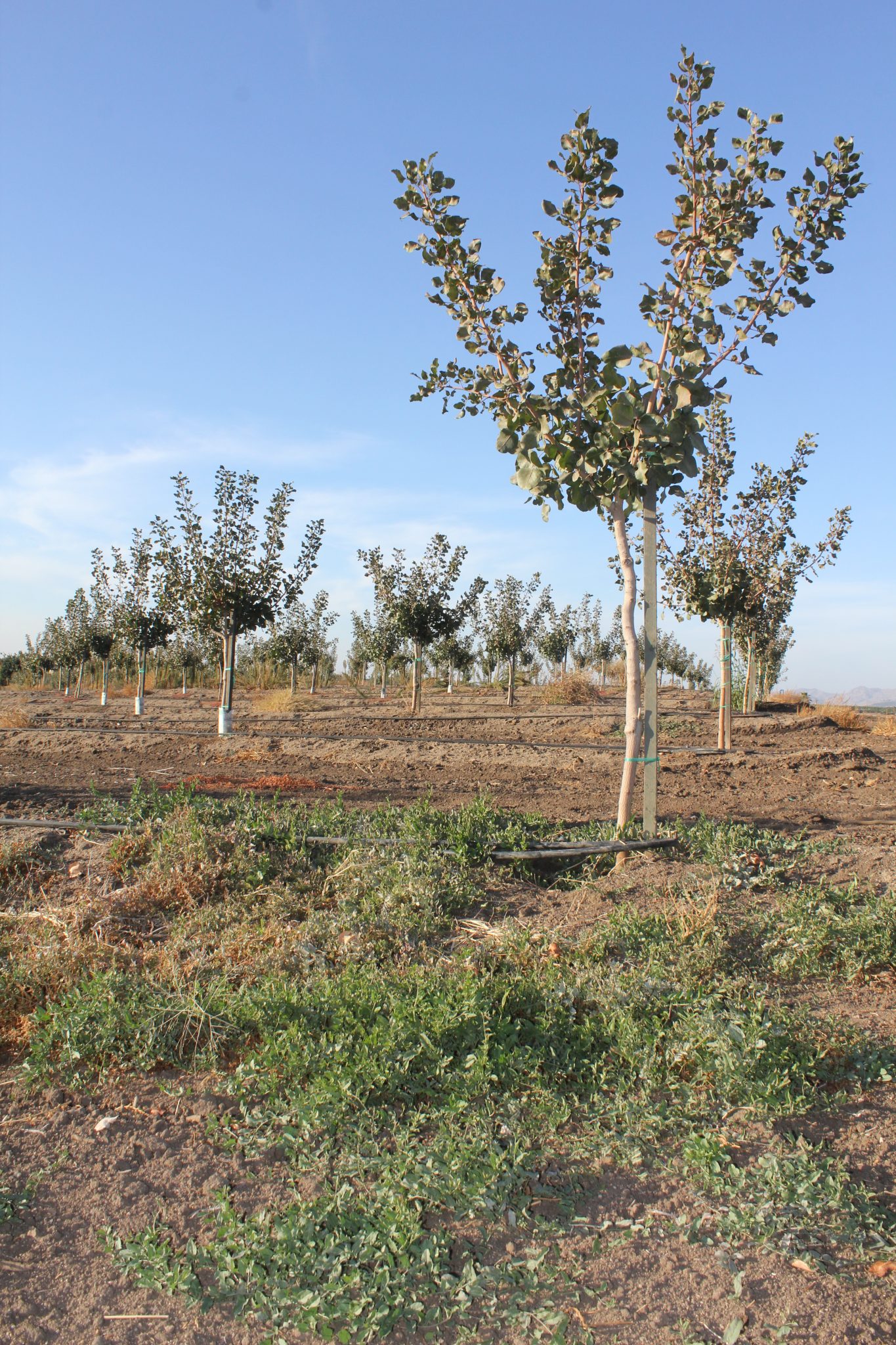
The reputation of pistachio trees being resistant to plant-parasitic nematodes stems from times when different rootstocks were used. With the changing parentage of current and future rootstocks, careful investigations need to be done to prevent the development of highly susceptible rootstocks.
“We are trying to determine which rootstock parents have susceptibility. While some Pistacia species likely have an above-average proportion of nematode-susceptible plants, it is not that clear in others,” said Andreas Westphal, UC Riverside nematologist.
Pistachio orchards are generally planted on heavier ground that is less likely to have high population densities of some plant-parasitic nematodes. Other species like the walnut root lesion nematode severely damage walnut in fine-textured soils as well.
Westphal does this work at the Kearney Agricultural Research and Education Center in Parlier with funding from California Pistachio Research Board. He tries to find the damage potential of the mentioned root lesion nematode that is the currently most damaging nematode pest on almond and walnut. He said the susceptibility to dagger nematode needs clarification as well.
“There are some rootstocks known to be susceptible to root knot nematode and root lesion nematode; that is why we initiated this research,” Westphal said. Pistachio growers have been relying on the UCB1 rootstock, but some lines seem more sensitive to nematodes than others. He added, “It took five years of growing rootstocks in nematode-infested soil before numbers in the pistachio roots were at levels found in other nut tree rootstocks. The long-term aspect is perhaps reflected in that a lot of the observations were made by my predecessor, Dr. Mike McKenry, that led to this research.”
Without knowing the level of susceptibility to nematodes in pistachio rootstocks, Westphal recommends soil sampling for nematodes prior to planting an orchard. Some guidance can be found at youtube.com/watch?v=U7x0xHoKqC8 . While there is limited information on the nematode damage potential, it is still important to know the nematode levels and to be cautious at extremely high population densities of some nematode pests.
It is advisable to sample from the root zone of the prior orchard crop in fields scheduled for pistachio. The longer a field has been fallow, the deeper samples should be taken. Frequently large populations are at great soil depths where they survive longer than at shallower depths. For walnut trees, Westphal said, that may be as deep as five feet. Soil samples should be placed in sealed plastic bags that are protected from temperature extremes, not allowed to dry out or freeze and not be exposed to the sun. They are best placed in a refrigerator until processing. Good communication with the diagnostics laboratory is key to make the most of the nematode sampling.

Cecilia Parsons
Cecilia Parsons has lived in the Central Valley community of Ducor since 1976, covering agriculture for numerous agricultural publications over the years. She has found and nurtured many wonderful and helpful contacts in the ag community, including the UCCE advisors, allowing for news coverage that focuses on the basics of food production.
She is always on the search for new ag topics that can help growers and processors in the San Joaquin Valley improve their bottom line.
In her free time, Cecilia rides her horse, Holly in ranch versatility shows and raises registered Shetland sheep which she exhibits at county and state fairs during the summer.















